For foreigners, how to better understand China’s tea culture? Of course, choose our tourist route: the Chinese black tea tour! Besides that, you will also have a Black tea culture tour and a China Yunnan tea tour. Our professional tour guide will take guests to several Chinese cities that are home to many famous kinds of tea during this tour. For example, Dali, a county-level city of Yunnan Province, allows you to intuitively feel the history and culture of tea, as well as the story behind tea. Moreover, in our China Yunnan tea tour, guests will visit some tea factories and eco-industrial parks where they can watch how crude tea leaves are transformed into delicious and marketable tea products. Trust us, you can get more than these words mentioned above if you choose our travel plans.

On the first day of this China Tea tour, guests will be welcomed at the airport in Beijing and transferred to the hotel.
After breakfast, we will visit Tian’anmen Square, which is in the center of Beijing. Covering an area of about 440,000 square meters and can accommodate one million people. People always say, when you come to Beijing, you must visit the magnificent Tian’anmen Square. It witnessed the founding of the People’s Republic of China in1949, so taking a photo in front of Tian’anmen Square was a dream for many Chinese people. Moreover, Tian’anmen Square is the pride of China and its people and a symbol of patriotism.
Then, we will move to the Forbidden City (closed on Monday). The Forbidden City was the dwelling place of the Chinese emperors during the Ming (1368-1644) and Qing (1636-1912) Dynasties. It was named because civilians at that time were not allowed to enter the Forbidden City. In the year of 1925, it opened to the public as a museum, later known as the Palace Museum. After passing the main gate of the Forbidden City, you will see five bridges straddling a river, with a very symmetrical layout. On the tour map of this palace, you will observe that the larger buildings fall on the central axis. In addition, you can visit the emperor’s offices, bedrooms, and gardens.
After lunch, we will go to see Tea Ceremony at Yixin Tea House. The tea ceremony here holds different types of tea as its corresponding themes, such as black tea, green tea, and oolong tea. On the stage in the tea house, tea artists display and make tea in front of the audience. Usually, you will have the opportunity to experience the texture, taste, and brewing skills of tea during the performance. Do you know what the favorite tea of Beijing people is? It is jasmine tea. There are two major objective reasons why people of Beijing love jasmine tea best. One reason is that, before the water quality in Beijing improved, the water here tasted bitter generally. The tea made of this kind of water was not good to drink. To solve this problem, people added jasmine to the tea water to use the special fragrance of jasmine to cover the bitterness of the tea water. The other is that jasmine tea has unique healthy functions. When you have a heavy meal, you can drink a cup of jasmine tea as it is very effective in relieving stomach upset and aiding digestion.
Next, we will arrive at Summer Palace, about a 40-minute drive from the Forbidden City to here. First built in 1750, Summer Place has three main elements: the royal court area, Kunming Lake, and Longevity Hill. What’s more, you can sense the natural beauty of lakes and mountains in this garden, with over 3,000 temples and garden architectures. You can go to see the Long Corridor in Summer Place. Walking in this long corridor, you will find countless Chinese paintings if you look up. There are also four pavilions here, representing the four seasons of the year, respectively.
This is all the attractions on the first day, and then you will return to the hotel in Beijing for a rest.
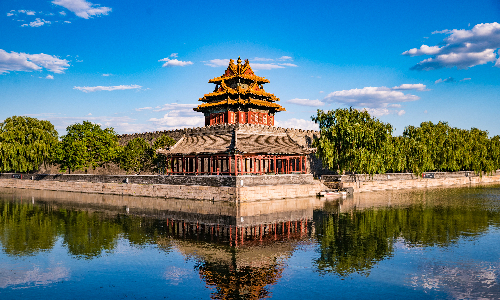

Today, we will first have breakfast and then go to see the Ding Tomb, in northwest Beijing. It takes about 1 hour (50KM) to drive from the Forbidden City to Ding Tomb.
Ding Tomb is one of the Ming Tombs that are collectively known as the Thirteen Tombs of the Ming Dynasty (1368-1644). It is the joint burial of Ming Emperor Zhu Yijun and his two queens. Ding Tomb was finally built after 6 years of construction, at a cost equivalent to 1.6 billion yuan today. Therefore, the scale of this tomb is very magnificent. Today, you can visit the main building in the upper part of the Ding Tomb. For example, the Wuzi Monument (a wordless monument). There is a sense of mystery because there is no inscription on it.
After lunch, we will drive northwest from Ding Tomb to Badaling Great Wall for about 55 minutes (40KM). Badaling Great Wall is an outstanding representative and the essence sector of the Great Wall. It is 3,741 meters long, with 21 platforms and wall units. Its main function at that time was to defend against the invasion of nomads from the north during the Ming Dynasty. You can listen to our tour guide to explain more about the scenery, history, and culture of the Badaling Great Wall.
After that, we will drive back to the hotel we first stay in. On the way back to the hotel, we will stop near two landmarks of Beijing, the Water Cube and Bird Nest, to take photos.
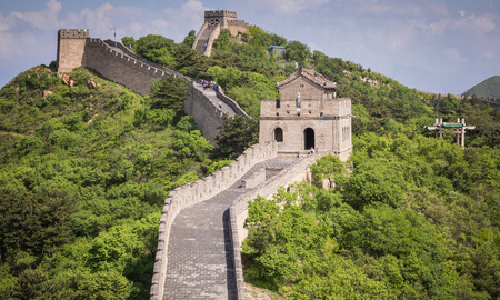
 Kunming
Kunming This morning, you will take the estimated flight CA1667 09:55/13:40 from Beijing to Kunming after breakfast. Then, you will be welcomed by your tour guide at the airport of Kunming.
Next, we will visit Green Lake Park, which is located northwest of Kunming. People call Green Lake Park “an emerald of Kunming” because this park is embraced by beautiful greeneries. It covers a total area of 21 hectares, and its water surface accounts for 15 hectares. It is particularly worth mentioning that, around every November, thousands of black-headed gulls from the north migrate to Green Lake Park to get through the chilly winter. Each year, from March to April, they leave Kunming to fly to northeast China, Siberia, and other places. If you come here in winter, you will have a chance to look at these lovely black-headed gulls closely.
Then, we will come to Flowers and Birds Market. It is situated in the core area of Kunming. This narrow street, less than half a kilometer, is filled with vendors selling flowers, birds, pets, antiques and jewelry. The scale of bird stores here is not very large. The common birds here you can find are parrots, pigeons, and so on. Moreover, there are many kinds of flowers here, from orchids to succulents, as well as from common green plants to exquisite potted plants. At the roadside stalls here, you can also find gardening tools, soil, etc. If you see the flowers that you like, you may consider buying one.
Your Kunming day tour ends here, and you will go to Dali the next day.
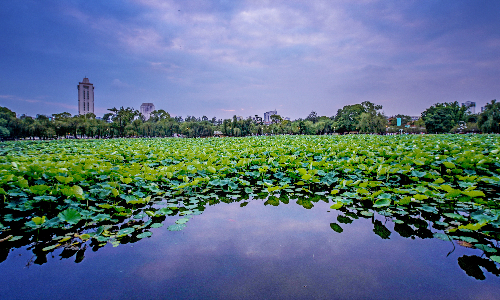
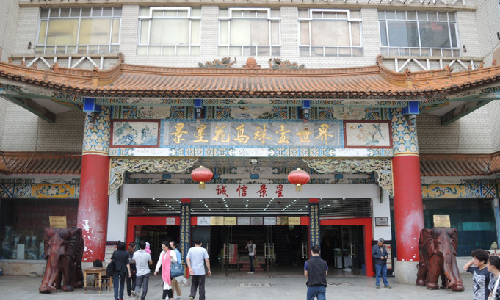
 Dali
Dali After breakfast, you will board the estimated high-speed train D8664 08:05/10:21 from Kunming to Dali. Our tour guide will pick you up at the train station.
Then, we will head for the Three Pagodas of Chongsheng Temple. They were built from 833 to 840, serving as a symbol of Dali. Among the three pagodas, Qianxun Pagoda is the largest one in the middle, with two pagodas smaller than it on the left and right. There has always been a local legend that there was a treasure, the Buddhist relic, hidden under the Qianxun Pagoda, but no one had found it yet. A team of archaeologists wanted to find this treasure so badly that they worked very hard to excavate it. But after working for more than 10 days, they didn’t even find a trace of the treasure. Just when everyone was about to give up, a piece of very reliable news came: the treasure was on the top floor of Qianxun Pagoda. However, the wooden ladder leading to the top of the pagoda was removed a long time ago. Thus, the team was once again inspired and decided to build a ladder to find the treasure. When they finally reached the top floor of Qianxun Pagoda, they only found a black iron box. When the box was opened, a gilded bronze tower model showed up. Even though the treasure was not found, the efforts of the team were not wasted because the gilded bronze tower was of the same archaeological value. Your guide will tell you more details about this story of Qianxun Pagoda if you are willing to know.
After lunch, we will visit Xiaguan Tuocha Tea Factory, which is the only Tuocha tea refining and processing enterprise in Dali. After 80 years of development, Xiaguan Tuocha Tea Factory has become a well-known tea-making enterprise. It has four categories of tea products, more than 80 varieties of tea, and an annual production capacity of 10,000 tons of refined tea. In this tea factory, you can learn about Toucha’s history, natural environment of planting lands, processing, brewing method, and so on.
Next, we will arrive at Dali Old Town to appreciate Dali Three-Course Tea, which is unique to the Bai minority living in Yunnan Province. The first course of the Three-Course Tea is bitter tea. When making this bitter tea, the first thing is to prepare a pot of boiling water, and then heat a small sand pot on a soft fire. After the sand pot is heated, an appropriate amount of tea leaves will be put in the pot to emit tea fragrance. Finally, pour boiling water into the pot. The second course is sweet tea. After repeating the steps of the first course, brown sugar, cinnamon, etc. are added to increase the sweetness of the tea water. The third course is aftertaste tea. The tea leaves in the sand pot are replaced with a moderate amount of honey, a little puffed rice, several pepper grains, and a pinch of the walnut kernel. This cup of tea has all kinds of flavors: sweet, sour, bitter, and spicy, leading you to endless aftertastes.
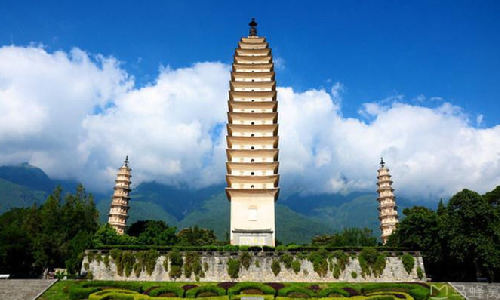
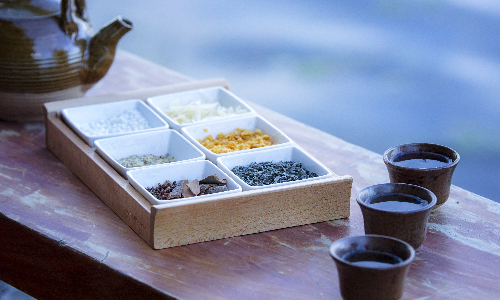
 Nanjian
Nanjian Xiaowan
Xiaowan Fengqing
Fengqing Today, we will go to Nanjian Tulin Tea Factory by driving southeast from Dali to Nanjian for about 2 hours (120KM). Nanjian Tulin Tea Factory, founded in 1985, has now evolved into a large-scale enterprise, covering an area of 25,000 square meters. There is a pure organic tea garden away from pollution, comparable to a fairyland. Here, you can find the most classic type of tea product of Nanjian Tulin Tea Factory: Cooked Tuocha Tea. This kind of tea contains tea leaves from mountains above 2,000 meters above sea level. It is made by drying, steaming, and pressing according to the traditional tea processes of Yunnan. You can smell the aroma of the Cooked Tuocha Tea without unfolding its outer packaging.
Then, we will drive southeast for about 2 hours (100KM) to visit Xiaowan Hydropower Station in Fengqing County. This hydropower station is located in the middle reaches of Lancang River in the south of Yunnan Province. With 294 meters high and 923 meters long at the top, its dam is the highest concrete hyperbolic arch dam in the world. You can go to the sightseeing platform of the dam of Xiaowan Hydropower Station. The viewing platform has three layers. You can see the whole picture of the dam from the top layer and will be impressed by this magnificent hydropower station and its dam.
Our next stop is Xiangzhuqing Village, where we will see Xiangzhuqing Ancient Tea Tree. This ancient tea tree has a height of 10 meters and a width of about 11 meters, with luxuriant branches and leaves. It also has the value of sightseeing and scientific investigation among numerous famous Chinese tea trees. There is a story about this ancient tea tree. A long time ago, a young fairy was tired of her life in heaven. She secretly came to the mortal world on her own. A few days later, she met a young man resting under a tea tree. They fell in love with each other at first sight and planned to be together forever. Soon, the fairy’s parents found their daughter was missing and immediately sent heavenly soldiers to take her back. The fairy was integrated with the tea tree to avoid the soldier’s pursuit. The fairy’s parents were furious when they knew their daughter was going to be married to a mortal. They trapped their daughter in the tea tree and gave her a chance for self-reflection. But the fairy was determined to be with her beloved man forever, even if she was completely separated from heaven. The desperate parents had nothing to do but let their daughter go out of love for her. Eventually, the fairy and the young man spent the rest of their time under the tea tree. Isn’t it interesting that this ancient tea tree carries such a love story?
After today’s visit, we will check in the hotel in Fengqing county.
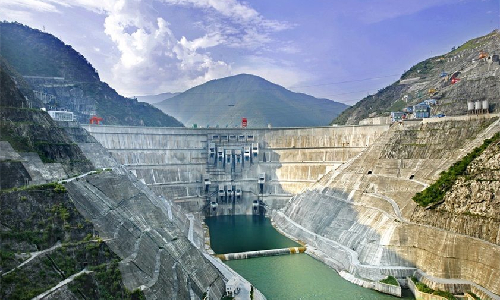
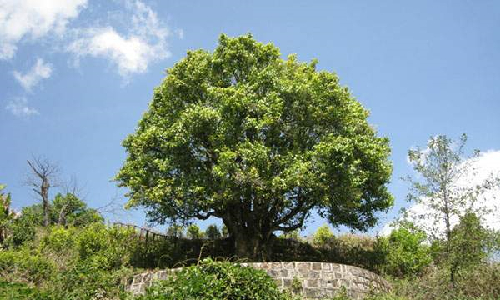
 Xiashan
Xiashan Yunxian
Yunxian Weishan
Weishan Dali
Dali Today, after breakfast, we will drive to Dianhong Eco-industrial Park in Fengqing County. Over the past eight years of planning and construction, Dianhong Eco-industrial Park has invested a total of 1.5 billion yuan in its development. At present, the built-up area of this eco-industrial park reaches 6.6 square kilometers. There are more than 30 registered companies and enterprises in this park. You can visit one of these innovative companies to see how it operates. You can also feel the perfect combination of ecological protection and industrial development in the park.
Then, we will visit Xiashan Ecological Tea Company in Fengqing County. Founded in 1952, this tea company is a private tea-making enterprise specializing in tea processing and promotion, as well as tea culture dissemination. It has two clean production lines, which are used to produce Congou black Tea and Congou green tea, respectively. Congou black tea is not only a unique black tea variety but also a traditional export commodity in China. You will know more about tea and this company during the trip with your guide.
After lunch, we will drive northeast from Fengqing County to Weishan Old Town for about 3.5 hours (185KM). As a famous historical and cultural town in China, Weishan Old Town has 25 streets and 18 lanes that are arranged in a crisscross pattern. On both sides of the street of this town, there are many shops built with gray and black bricks and tiles, and the charm of this town is reflected in the bright afternoon sunlight. While visiting this ancient town, you can feel the simplicity of the local residents and their laid-back life.
After the visit to Weishan Old Town, we will drive north to Dali for about 1.5 hours (75KM) and check in the hotel in Dali.
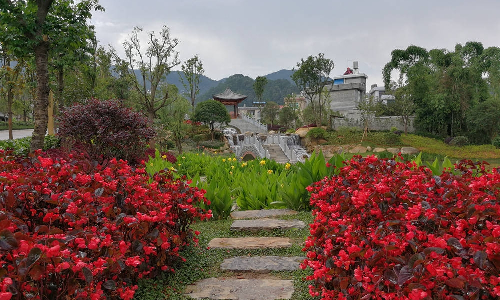
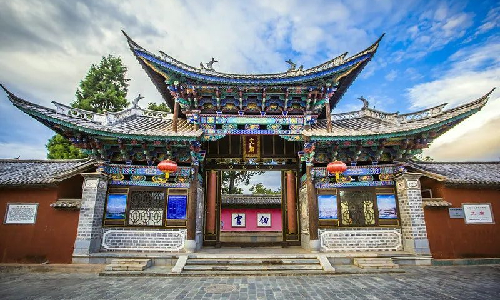
 Lijiang
Lijiang After breakfast, we will take the Erhai Lake Boat for sightseeing. Sitting on the Erhai Lake Boat, you can see the surface of Erhai Lake is sparkling in the early morning sunshine. Looking far away, you will notice a mountain, Cangshan Mountain, with white clouds floating on its peak. It feels like that you are voyaging on a blue sea, and your thoughts are drifting with the moving white clouds and the waves of the Erhai Lake. In the distance, on the reeds, you have the chance to see a flock of exuberant egrets taking off, landing and changing formation in the air as if they were rehearsing an air show.
Next, we will visit Xizhou Village, which preserves the largest and most complete Bai minority residential buildings in China. The center of Xizhou Village is a small square surrounded by numerous shops, where a stone archway bridge is erected. When you walk to the edge of Xizhou village, you will suddenly see a vast field. You can see a large area of village fields embrace the blue sky and white clouds. Standing on the earthen dam in the field, you will find that Xizhou Village is U-shaped and looks like a simple and elegant village from a distance, surrounding this piece of land like a chessboard.
After lunch, we will drive north for about 2 hours (170KM) from Dali to Lijiang.
Upon arrival in Lijiang, we will come to Lijiang Ancient Town, which has a history of eight or nine hundred years. You will see that most of the residential buildings in Lijiang Old Town are built with clay and wood. In terms of external modeling and structure, these buildings and houses combine the architectural styles of the Han, Tibet, and Bai nationalities. Furthermore, Lijiang Ancient Town boasts many folk cultures and festivals. Take the Torch Festival for example. This festival’s first activity is bullfighting, which is originated from an ancient story. It is said that in ancient times, there was a devil who enjoyed sabotaging villagers’ happy life in this town. The villagers could not bear it anymore and gathered to expel the devil. The devil wanted to add more fun to his evil acts, so he set a challenge for the villagers. The challenge was to fight with the devil’s mount, a strong bull. The bull was soon defeated by a warrior from the villagers. The devil got angry and sent out locusts and other pests to eat all the crops in this town. So, the villagers gathered again, used torches to burn these pests, and finally killed them all. Later, the Torch Festival was set up by the villagers to commemorate their hard-won victory. You will certainly be awed by the villagers’ courage and spirit of fighting for happiness despite the hardships.
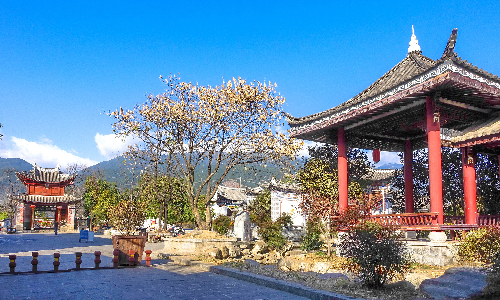

After today’s breakfast, we will move to the Jade Dragon Snow Mountain, which is about 20 kilometers north of Lijiang Ancient Town.
Then, we will take the cable car up to the Spruce Meadow on the east of the Jade Dragon Snow Mountain. It is a huge meadow hidden in the original spruce forest on the mountain, with an altitude of 3,240 meters. It is also known as a beautiful place to give one’s life for the sake of love in ancient times. According to a legend, Spruce Meadow was the place where the first pair of lovers of Naxi nationality died. This young couple lived together in happiness on their own at first. But their love life was torn apart by the unreasonable polygamy at that time. All this young couple wanted was a free love life, rather than being manipulated by the so-called destiny. However, no one supported them, not even their parents. So, they came to the sacred Spruce Meadow to end their lives. The lovers’ spirit of pursuing freedom of love moved and inspired generation after generation of Naxi nationalities. Today, you can savor this touching romance story while roaming in the pure Spruce Meadow.
By the way, it is worth mentioning that the Snow Tea of the Jade Dragon Snow Mountain is a precious specialty of Lijiang. As its name suggests, Snow Tea is as white as snow. It only grows on high-altitude snow mountains and cannot be cultivated artificially. With a delicate aroma, it can be brewed alone or with various tea leaves, licorice, chrysanthemums, and so on.
Coming down from the mountain, we will then visit Blue Moon Lake that is also in the Jade Dragon Snow Mountain. The water of Blue Moon Lake is a light, clear and transparent blue. Under the shades of green trees, the majestic Jade Dragon Snow Mountain has become Blue Moon Lake’s background, which is very beautiful. You can see that the sun hanging high is reflected on the lake. When you are lingering by the lake, you must be intoxicated by its beautiful scenery.
After lunch, we will arrive in Baisha Village to visit Baisha Mural Paintings, which is in the south of Jade Dragon Snow Mountain. Baisha murals were created in the Ming Dynasty during the great opening of Naxi society. You can see plenty of life stories of Tibetan Buddhism, Confucianism, and Taoism on these mural paintings. They are also unique in incorporating various religions, cultures, and art schools. You can also observe the vivid natural landscapes on these paintings: galloping horses, blooming lotus, mountains, forests, fields, flowers, birds, and so on.
Later, we will drive to Shuhe Ancient Town. As an important area of Lijiang, this ancient town is the earliest settlement of Naxi ancestors. When you come to the most prosperous area of Shuhe Ancient Town, you can see that this town is close to mountains and rivers, with excellent scenery. It is also a famous land of leather. Leather shoes, leather goods, linen threads, and ironware are produced here to meet the needs of various commodities. Besides, you may feel detached from the world while walking in this tranquil town.
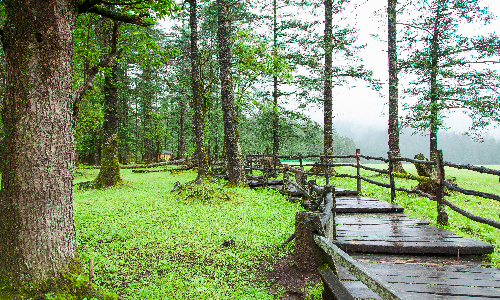
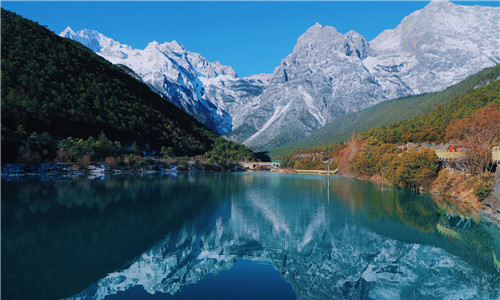
 Shangri-La
Shangri-La After breakfast, we will first drive west from Lijiang to the First Bend of Yangtze River for about 1.5 hours (51KM) during our trip to Shangri-La. The First Bend of Yangtze River is an important sightseeing spot in Lijiang due to its V-shaped curve. You can see that the galloping Yangtze River is blocked by cliffs and turns sharply into a V-shaped bend. Although the river flows fast before reaching the First Bend of the Yangtze River, the river is as smooth as a mirror after arriving because the river bed is very wide. On both sides of this bend, you can see many green willows and mountains under the white clouds and blue sky. You can also notice that there are neat and uniform fields, villages, and towns not far away.
Then we will continue to drive south for about 1 hour (54KM) to Tiger Leaping Gorge, which is the second deepest gorge in China. It is divided into upper, middle, and lower sections, with a total of 18 rapids. When you are at the lower section, you will see that a river, hundreds of meters wide, suddenly shrinks into rapids of about ten meters. And two huge boulders are standing on each side of the riverbanks. About the name of Tiger Leaping Gorge, there is a legend. It was said that the master Mu, the ruler of Lijiang at that time, raised a tiger as his mount. On a fine day, master Mu was in a good mood, so he rode his tiger to see the surging river with a picturesque landscape in Lijiang. After a while, he came to the lower area of a narrow gorge. He wanted to get a closer look at the beautiful river. So, the tiger leaped with master Mu on its back to a huge rock in the middle of the river. Unfortunately, master Mu did not hold tight his tiger and fell into the fast-flowing river. Obviously, it was impossible to get master Mu back. A long time has passed, and Master Mu and his tiger have long since disappeared from people's memory. But they left an imaginative name: Tiger Leaping Gorge. Today, you can visit this gorge and watch the beautiful river here.
After all today’s visit, we will check in the hotel in Shangri-La. You will have lunch then.

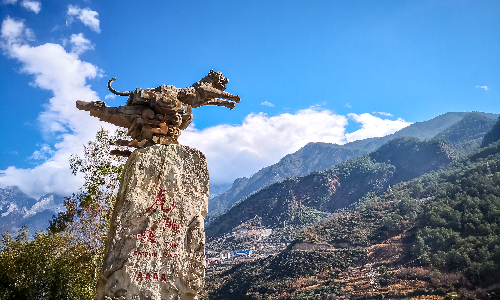
 Kunming
Kunming After breakfast, we will visit Songzanlin Monastery, the largest Tibetan Buddhist monastery in Yunnan Province. As an ancient castle complex, it was built in 1679 and completed in 1681. The monastery buildings here are resplendent, with rich and varied gold-plated copper tiles. You can see many Buddha statues are enshrined in the spacious and magnificent hall in the front of this monastery. While visiting Songzanlin Monastery, you need to be aware that some behaviors are considered disrespectful: pointing at the Buddha with your fingers and entering rooms without permission.
Then, when we finish our lunch, we will come to Potatso National Park, which is the first National Park on the Chinese mainland. This national park consists of the Bita Lake and Sudu Lake eco-tourism area. This park is also blessed with rich natural resources, including lake wetland eco-tourism resources, rare animals and plants, and ornamental plants, etc. When it comes to animal resources, we must talk about the rare fish with three layers of lips growing in the Bita Lake. According to experts, this kind of rare fish is an ancient creature with a history of more than 2 million years. While learning more about its natural resources, you can enjoy this quiet and harmonious fairyland.
After that, you will catch the estimated flight MU5940 22:10/23:20 from Shangri-La to Kunming. Then, you can have a good rest in the hotel in Kunming after you are welcomed by our guide at the airport of Kunming.
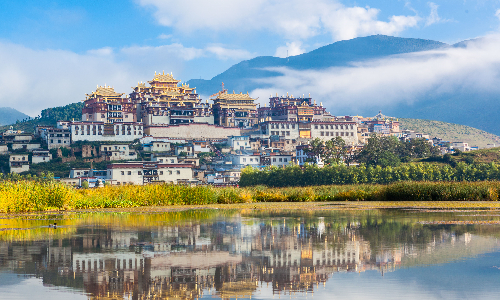

 Hong Kong
Hong Kong In today’s morning, you will take the estimated train G410 09:21/16:57 from Kunming to Hong Kong after you have breakfast. Then you will be transferred to the hotel in Hong Kong.
After breakfast, we will visit Wong Tai Sin Temple, which is known as the largest temple in Hong Kong. Wong Tai Sin Temple is a typical Taoist temple in which Wong Tai Sin is enshrined. Wong Tai Sin is an immortal with boundless power in the hearts of the Hong Kong people. Because he gives responses to every prayer, countless devout men and women worship him. Moreover, Wong Tai Sin Temple is located on the main traffic road of Hong Kong, so it is convenient to visit. You can find the atmosphere of Wong Tai Sin Temple is not quite the same as other temples, which is very lively.
Then, we will take the peak tram up to Victoria Peak. It is seated in the Central and Western District of Hong Kong. As a landmark of Hong Kong, Victoria Peak is a nice place for you to enjoy the stunning beauty of Hong Kong Island. Standing on the observation deck here, you can see countless high-rise buildings and luxury apartments under white clouds. You can also easily find the tallest building in Hong Kong, which is International Finance Centre.
After that, we will drive to Repulse Bay. This crescent-shaped bay is a fine place for a beach picnic. If you have time to prepare in advance, you can spread picnic cloth under the trees here, sit down and look at the sea leisurely. Sometimes you may see a personal family coach taking a group of children to exercise on the sand beach of Repulse Bay. Under the bright sunshine, the sound of waves patting the beach mingles with the children’s laughter, reverberating in your ears. Isn’t that pleasant?
Later, we will drive to Stanley Market, which is in a small town in the south of Hong Kong. This dazzling market is suitable for leisure and vacation. At this popular market, you can buy all sorts of clothes, antiques, and souvenirs. Stanley Market not only attracts locals but also many foreign tourists. Many Europeans like these small objects here very much. Here, you can also find a lot of small commodities, which are practical and affordable.
After today’s visit, we will return to the hotel in Hong Kong.
Option: You can try one of the Hong Kong people’s favorite milk tea, the Hong Kong Style Milk Tea. It is a unique drink in Hong Kong, which is characterized by its smooth yet a little bit of bitter taste. Especially, the milk aroma will linger long in your mouth when you drink a cup of HK Style.
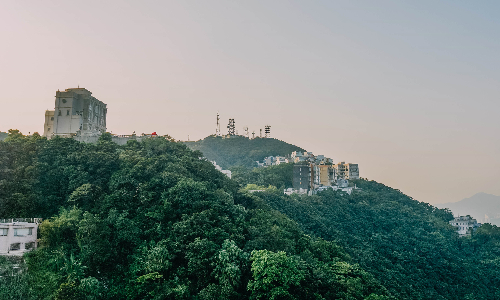
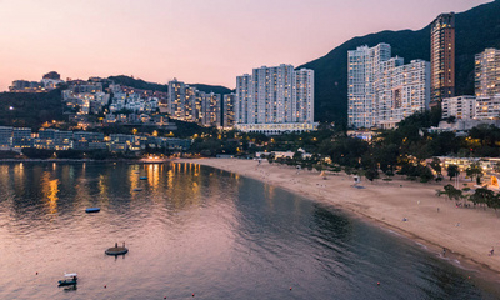
After today’s breakfast, we will drive to Lantau Island. We will hop on the Ngong Ping 360 Cable Car at the Ngong Ping Cable Car Station up to Ngong Ping Village.
Then, we will visit the Big Buddha and Po Lin Monastery. The Big Buddha is a colossal bronze statue of Buddha. It costs about 60 million Hong Kong dollars. To come in front of the Big Buddha, you must climb the 268 stone steps first. The Buddha’s body is made of more than 200 pieces of copper sheet. You can see that the solemn and peaceful face of the Buddha shining in the sun. After coming down from the Big Buddha, we will continue to visit Po Lin Monastery. As a Buddhist holy land, this monastery boasts an architectural complex with exquisite structure. The Main Hall and many other Buddhist buildings are built according to the terrain here. In addition, if you want to try the vegetarian dishes of Po Lin Monastery, you can buy a meal ticket at the Dining Hall and have a meal inside.
Later, we will take the cable car down the mountain and drive back to the hotel in Hong Kong.
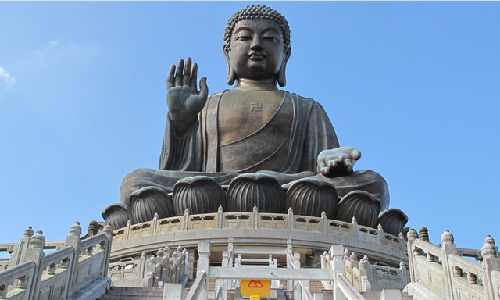
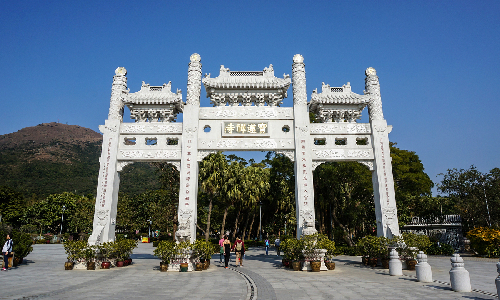
Today is the last day of the 15 Days China Black Tea and Erhai Lake tour. After breakfast, you can take photos with our guide and staff and then take the return flight to your homeland. Welcome to come here again. Good-bye!
Author: Yan Weiran
Proofreader: Lexie
| City | Five Star hotel list | Four Star hotel list |
|---|---|---|
| Beijing | Sunworld Dynasty Hotel Beijing Wangfujing | Sunworld Hotel Wangfujing |
| Kunming | Grand Park Kunming | UChoice Hotel |
| Dali | The One Hotels & Resorts | Landscape Hotel |
| Fengqing | Dianhong Hotel | Dianhong Hotel |
| Lijiang | Wonderport International Hotel | Lijiang Wangfu Hotel |
| Shangri-La | Paradise Hotel | Ri Yue Xing Cheng Hotel |
| Hong Kong | Harbour Grand Kowloon | Harbour Plaza North Point Hotel |
 |
![]() About your child or infant, please contact us for a discounted price.
About your child or infant, please contact us for a discounted price.



We started with a few days in Beijing & ended in Shanghai, from where we visited the Forbidden City and Great Wall. In between we visited Terra Cotta Warriors Museum, Panda Base, Shanghai Disneyland.

We had a wonderful holiday in China which will remain long in the memory. China is a breathtakingly beautiful country full of splendid temples and palaces, mountains and rivers, peaceful rural scenes and bustling shopping streets.
 QUICK ENQUIRY
QUICK ENQUIRY